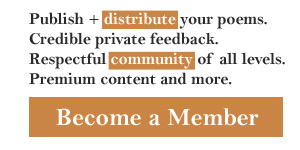This is an analysis of the poem Like Most People Evil that begins with:
During their last thrill ride aboard evil,
Those caught up in their wicked ways......
Elements of the verse: questions and answers
The information we provided is prepared by means of a special computer program. Use the criteria sheet to understand greatest poems or improve your poetry analysis essay.
- Rhyme scheme: AbcXAcAdcb Abecdeabbdb
- Stanza lengths (in strings): 10,11,
- Closest metre: trochaic tetrameter
- Сlosest rhyme: enclosed rhyme
- Сlosest stanza type: sonnet
- Guessed form: unknown form
- Metre: 1011110110 11101101 0101 01001000001 111010 101010101 111010 10111011 0101101001 110111011 1011110110 101001001010 110110100101 1101010100 010111 01001 1111010 111001001101 00010000101110 1110100010111 0100010101110
- Amount of stanzas: 2
- Average number of symbols per stanza: 408
- Average number of words per stanza: 70
- Amount of lines: 21
- Average number of symbols per line: 38 (medium-length strings)
- Average number of words per line: 7
Mood of the speaker:
There are many three dots in the poem. Readers should think of the author's idea together with the pensive speaker.
The author used lexical repetitions to emphasize a significant image; they, their, to are repeated.
The author used the same word during at the beginnings of some neighboring stanzas. The figure of speech is a kind of anaphora.
If you write a school or university poetry essay, you should Include in your explanation of the poem:
- summary of Like Most People Evil;
- central theme;
- idea of the verse;
- history of its creation;
- critical appreciation.
Good luck in your poetry interpretation practice!
Pay attention: the program cannot take into account all the numerous nuances of poetic technique while analyzing. We make no warranties of any kind, express or implied, about the completeness, accuracy, reliability and suitability with respect to the information.
More information about poems by Lawrence S. Pertillar
- Analysis of No Matter What The Tactics Used
- Analysis of I Will Say This
- Analysis of That's The Problem

